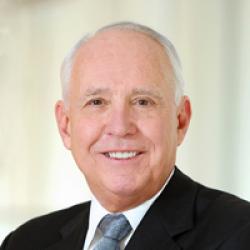Editor’s Note: This column was first published on January 31, 2018, as part of the LinkedIn series “Hard Cases.”
After I completed my residency training in psychiatry, I served as a research fellow at the National Institute of Mental Health (NIMH) in Washington, D.C. As an NIMH fellow, I maintained a limited private practice, and because of my research work, I was often referred more complex and difficult cases. Among the patients who stand out most clearly, as I look back, were the physicians I treated for stress, anxiety, and depression. Throughout my medical training and fellowship, I witnessed the problem of burnout among my colleagues, and I experienced my personal share of anxiety along with the difficulty of balancing a demanding professional career with personal and family time. But at that time, we simply viewed these as challenges inherent to the intense and stressful profession we had chosen. It was not until I became a psychiatrist treating physicians as patients that my eyes were opened to the significant and widespread problems of burnout, depression, and suicidal ideation among physicians.
Since those early days of my career, evidence of the toll of depression and burnout on the clinical professions continues to mount. In a recent study, 39% of physicians reported experiencing depression—an increase of nearly 10% in just three years. Burnout among physicians is nearly double that of U.S. workers in other fields, after controlling for work hours and other factors. In addition to the high personal cost of burnout and depression, these problems have also been shown to lead to decreased productivity, high staff turnover, and increased potential for medical errors at an organizational level—all of which have consequences for our patients.
These findings are sobering and should deeply affect all of us who work in health care or are responsible for training the next generation of clinicians. However, in recent years, there has been a convergence of the growing body of research about the prevalence of burnout, depression, and suicide among physicians and our increasing awareness of the serious individual and institutional tolls these issues take. The momentum is building for us to do something about these issues, and I hope that, years after I began treating physicians as psychiatric patients, we have finally reached a tipping point when it comes to clinician well-being.
The National Academy of Medicine (NAM)—formerly the Institute of Medicine (IOM)—has a history of harnessing research findings to effect real change in health care. When it was first published in 1999, the landmark IOM report To Err is Human sent shockwaves through our community with its statement that an estimated 44,000 to 98,000 people were dying each year as a result of medical errors, exceeding deaths from car accidents, breast cancer, or AIDS. There was initially a great deal of denial about the magnitude of the problem. But denial turned to awareness, and then a real momentum built as our profession began soul-searching about quality and safety in health care. The follow-up report, Crossing the Quality Chasm, gave our community a clear blueprint for improving patient safety and the quality of clinical care.
Now, the NAM has taken on the issue of clinician well-being with the same vigor it had when sounding the alarm about patient quality and safety. In December 2016, the NAM announced a wide-ranging collaborative to advance evidence-based solutions to promote clinician well-being and combat burnout, depression, and suicide among U.S. health care workers. I have the privilege of cochairing the NAM Action Collaborative on Clinician Well-Being and Resilience alongside Chair Victor Dzau, MD, NAM president, and Cochair Tom Nasca, MD, MACP, CEO of the Accreditation Council for Graduate Medical Education (ACGME). Our meetings over the last year have convened representatives from professional associations, health care organizations, government, insurers, academia, nonprofits, and the technology sector to discuss clinician burnout, health system dysfunction, the pressures associated with regulatory issues and documentation, and more. Our challenges are clear, and creating lasting change will take significant work and diligence. But I am hopeful that this call to action will have the same transformative effect on our profession as the IOM’s attention to quality and safety did.
In the nearly two decades years since To Err Is Human was published, we have been on a long journey of improvement. We are just at the beginning of a similar journey to transform our approach to clinician well-being. In fact, the three of us leading the NAM Action Collaborative recently published a perspective piece in the New England Journal of Medicine titled “To Care is Human—Collectively Confronting the Clinician-Burnout Crisis." As I think back to the physician patients I treated early in my career, it is clear how important and long overdue these developments are. Caring for patients can come at a high personal cost to clinicians themselves. With our focus on the problem, I hope we will be able to improve this issue for the next generation of clinicians—not only for their individual health and well-being, but for the health and well-being of our entire profession and all of the patients we serve.

